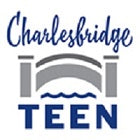Tooling Around

Ellen Jackson, author
Ellen Jackson grew up in Glendale, California, where her mother worked for Walt Disney Studios. Her childhood interests centered around reading. She has traveled in Europe and South America, including the Amazon jungle and the Galapagos Islands.
Read more about Ellen Jackson.
Renné Benoit, illustrator
Renné Benoit is the illustrator of several picture books, including Mooncakes, The Secret of the Village Fool, and Proud as a Peacock, Brave as a Lion. Renné lives in Ontario, Canada.
Read more about Renne Benoit.
- NSTA/CBC Outstanding Science Trade Books for Students K-12
Publishers Weekly
Upbeat, if somewhat corny, rhymes help introduce ways in which 11 wild animals utilize tools. Subjects include a crow that bends a piece of wire to reach an object, otters that use rocks to smash open shellfish, and dolphins that use sea sponges to catch fish: "Dolphins choose a cone-shaped sponge,/ wrap their beaks, then fish and lunge." Longer prose passages elaborate on each animal's activity: "Elephants strip leaves from branches," writes Jackson. "They use the stripped branches to swat flies or other insects that bite them." Benoit's mixed-media illustrations fall between naturalistic and cozy, creating an accessible entry point to learning about animal behavior. An author's note provides additional background on animals' tool use and the habitats of the featured animals.
School Library Journal
Woodpecker finches, chimpanzees, otters, deer, and octopuses are just some of the animals whose use of tools is explored in this attractive, informational picture book. Rhyming couplets paired with explanatory paragraphs in succinct, descriptive prose explain how various species use objects to accomplish specific goals. A helpful introduction explains what a tool is, defining it fairly broadly ("Many scientists who study animal tool use define a tool as an object that an animal uses to accomplish a goal"): the book uses some clear examples (a chimp using sticks and straws to obtain termites, otters using rocks to crack shells) as well as less obvious ones (squirrels kicking rocks and sand at a snake, male red deer covering their antlers with mud or grass to attract mates). Soft watercolor, pencil, and gouache illustrations depict the animals realistically. This book allows for a rich, up-close look at a fascinating aspect of animal behavior, and while the use of tools is the primary focus, the pictures will also enhance discussions around animal habitats as well. The rhyming portions make this title ideal for reading aloud with younger children, while the more in-depth explanations allow for engaging independent reading by older kids. An author's note goes into further detail about tools, and the bibliography and additional resources showcase some solid books and websites for kids. Useful for instructional purposes and accessible enough for students to read on their own.
Booklist
Sure, people use tools, but animals? On each double-page spread of this attractive picture book, Jackson introduces a species that will surprise readers with its inventiveness and adaptability. Short, rhyming verse introduces the ideas, while a large-scale picture illustrates them, and a few sentences explain what the animal is doing and why. For example, the rhyme "Otters on an ocean swell / use a rock to crack a shell" accompanies images of otters swimming, picking up a rock, and dining on the mullusk inside, while the short prose text comments on what's happening. Also featured are a woodpecker finch, chimpanzee, crow, deer, and elephant, among others. An author's note discusses scientists' ongoing discussion of animal tool use. Benoit's appealing artwork, created with watercolor, colored pencil, and gouache, illustrates the animals' unusual behaviors with warmth, color, and attention to detail. An intriguing idea presented in an accessible way.
NSTA Recommends
Are humans the only animals that use tools? This colorful picture book answers this question by showing how a wide variety of animals make use of available materials as tools. As the author notes, "People use tools everyday-and so do some animals. Meet crafty creatures and the tools they use."
The animals shown include finches, chimpanzees, otters, crows, deer, bower birds, flies, dolphins, octopuses, elephants, and squirrels. The book includes an author's note about animal tool use, information as to where the animals shown live, and a list of resources for children including books and websites. The book is built around great illustrations of animals using tools. There are two illustrations of a young boy and girl.
The left side of each two page spread presents easy readings in rhyme. An example is "Finches with a cactus spine, dig for bugs on which to dine." The right side of the spread is a scientific explanation for teachers and caregivers. The book ends with the note, "And we can see that the gap between humans and animals is not as great as we once thought."
Hardcover
ISBN: 978-1-58089-564-4
Paperback
ISBN: 978-1-58089-565-1
E-book
ISBN: 978-1-60734-751-4 EPUB
ISBN: 978-1-60734-653-1 PDF
Ages: 4-8
Page count: 32
8 1/2 x 11
Correlated to Common Core State Standards:
English Language Arts-Literacy. Reading Informational. Grade 1. Standards 1-8 and 10.
English Language Arts-Literacy. Reading Informational. Grade 2. Standards 1-8 and 10.





